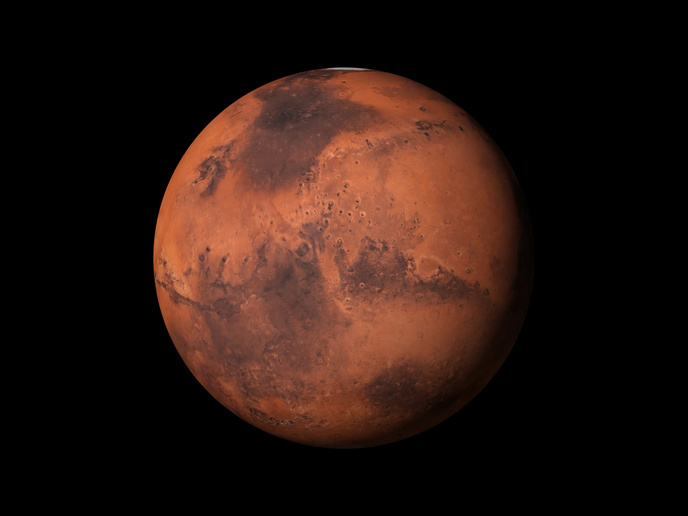Understanding the role of dust and clouds on Mars
Mars still holds many mysteries. Yet one of the major unanswered questions about the red planet is the role played by dust – which is present everywhere and can sometimes envelop the whole planet in violent storms. “Dust and cloud occurrences can be observed from space, even from Earth, so their climatology is relatively well-known: seasonal features are observed to occur every year in specific regions,” explains Ann Carine Vandaele, head of the Solar Radiation in Atmospheres Department at the Royal Belgian Institute for Space Aeronomy. “However, the exact nature of dust is still elusive, as well as how dust and clouds interact with the rest of the atmosphere, how they drive the heat exchange, and how they impact the escape processes which lead to the loss of the atmosphere to space,” adds Vandaele, ROADMAP project coordinator. In the EU-funded ROADMAP project, researchers combined laboratory experiments, the modelling of specific phenomena, analysis of space data and global circulation modelling to improve our understanding of the role of dust and clouds in the Martian atmosphere.
A synergistic approach to the dust problem
The central idea of ROADMAP was to promote a synergistic approach by considering the problem from different perspectives. The project brought together: the laboratory community, whose scientists know and understand the reference data and how to extract the most from their experiments; scientists involved in space missions, who know the intricacies of their instruments, and scientists developing numerical models, who know which data are most relevant and how best to interpret their results. Results from the lab experiments helped the team explore several research questions, including whether they could improve the accuracy of dust and cloud properties, whether they could better distinguish dust, water ice and CO2 ice, and if they could improve simulations of dust particles in a global circulation model. The researchers also sought out additional information on the role of dust in the atmosphere dynamics, and if they could better simulate temperature, which is a crucial parameter in measuring the abundance of trace gases from atmospheric observations.
Advancing our understanding of wind-driven dust
The team successfully observed wind-driven dust resuspension in the lab under Martian conditions. They showed that it can occur either through collisions of wind-driven sand or directly by the wind if the dust layer is thick enough. “This implies that the depth of dust is an important factor in how susceptible a surface is to producing dust by wind exposure,” explains Vandaele. The wind-driven creation of dust has also now been seen in the lab due to abrasive sand impacts. “This supports the idea that this is the source of the dust on Mars, helping us understand the complete dust life cycle,” adds Vandaele.
Improving knowledge of Mars
The researchers hope the ROADMAP project proves that lab measurements are a prerequisite to success in space missions. These lab measurements are performed on analogues, our best samples constructed on Earth based on our limited knowledge. Vandaele notes that what the project showed is that, although these adequately reproduce the observed dynamic properties of dust, they cannot explain spectral observations obtained by remote sensing. “ROADMAP showed that nothing replaces ground truth, in our case samples coming directly from Mars,” she says.
Keywords
ROADMAP, space, mars, dust, clouds, storm, mystery, wind-driven



